
How to Use Placa MOSFET: Examples, Pinouts, and Specs
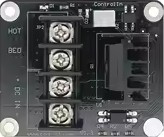
 Design with Placa MOSFET in Cirkit Designer
Design with Placa MOSFET in Cirkit DesignerIntroduction
The Placa MOSFET DG206N06 by O&M is a high-performance MOSFET (Metal-Oxide-Semiconductor Field-Effect Transistor) board designed for efficient control of electrical power in circuits. It is widely used in applications requiring high-speed switching, low power loss, and precise control of high voltages and currents. This component is ideal for motor control, LED dimming, power supply regulation, and other high-power applications.
Explore Projects Built with Placa MOSFET
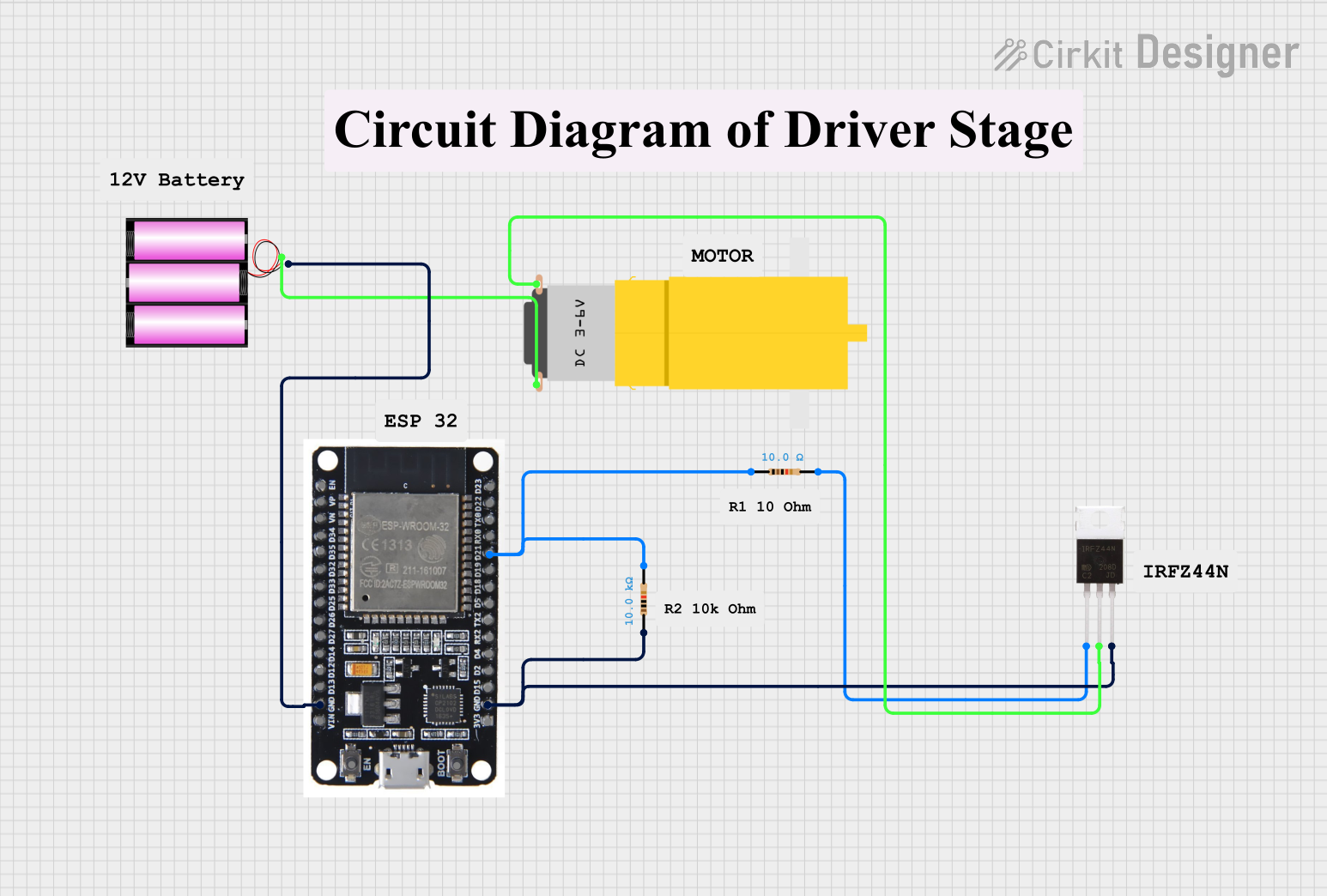
 Open Project in Cirkit Designer
Open Project in Cirkit Designer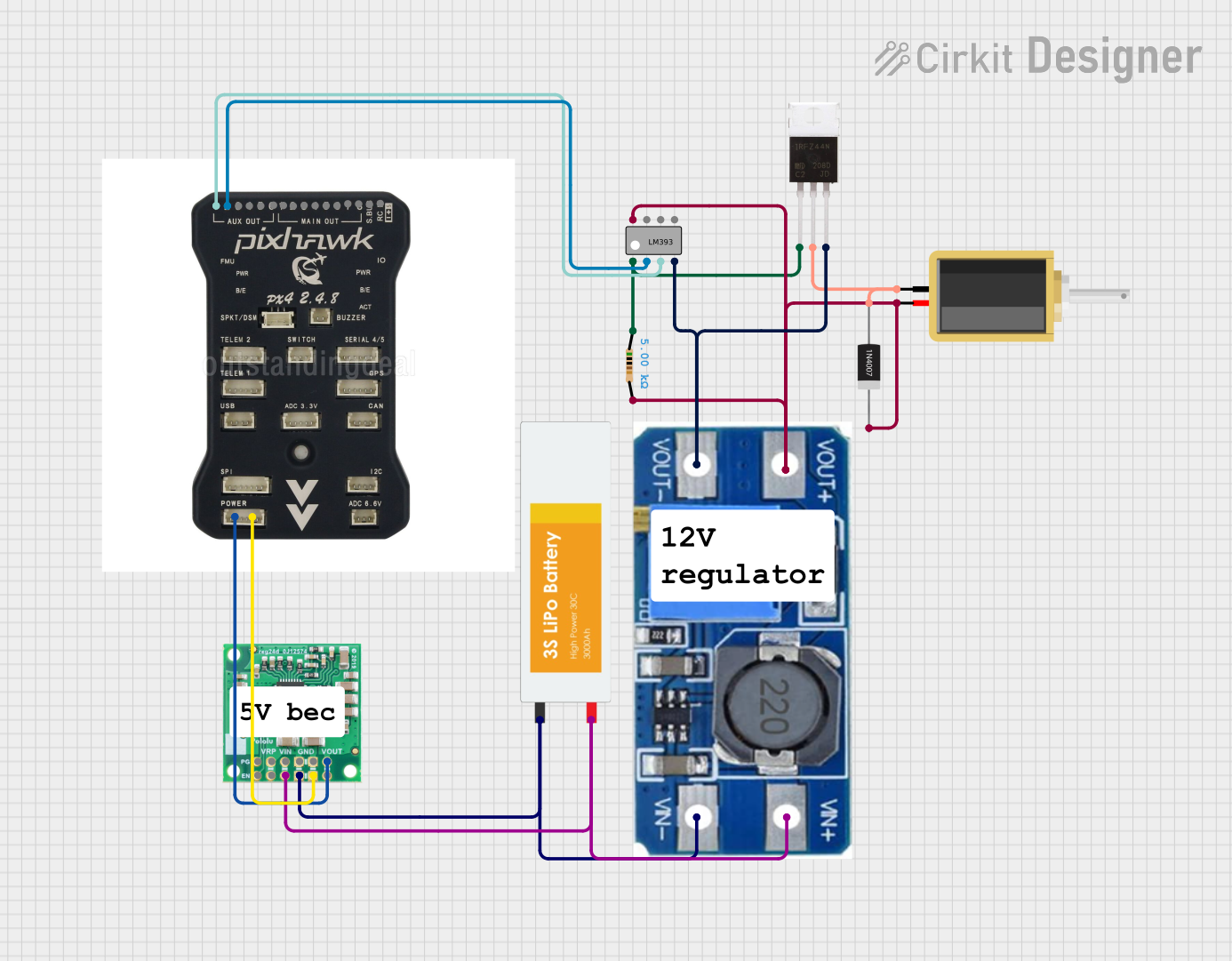
 Open Project in Cirkit Designer
Open Project in Cirkit Designer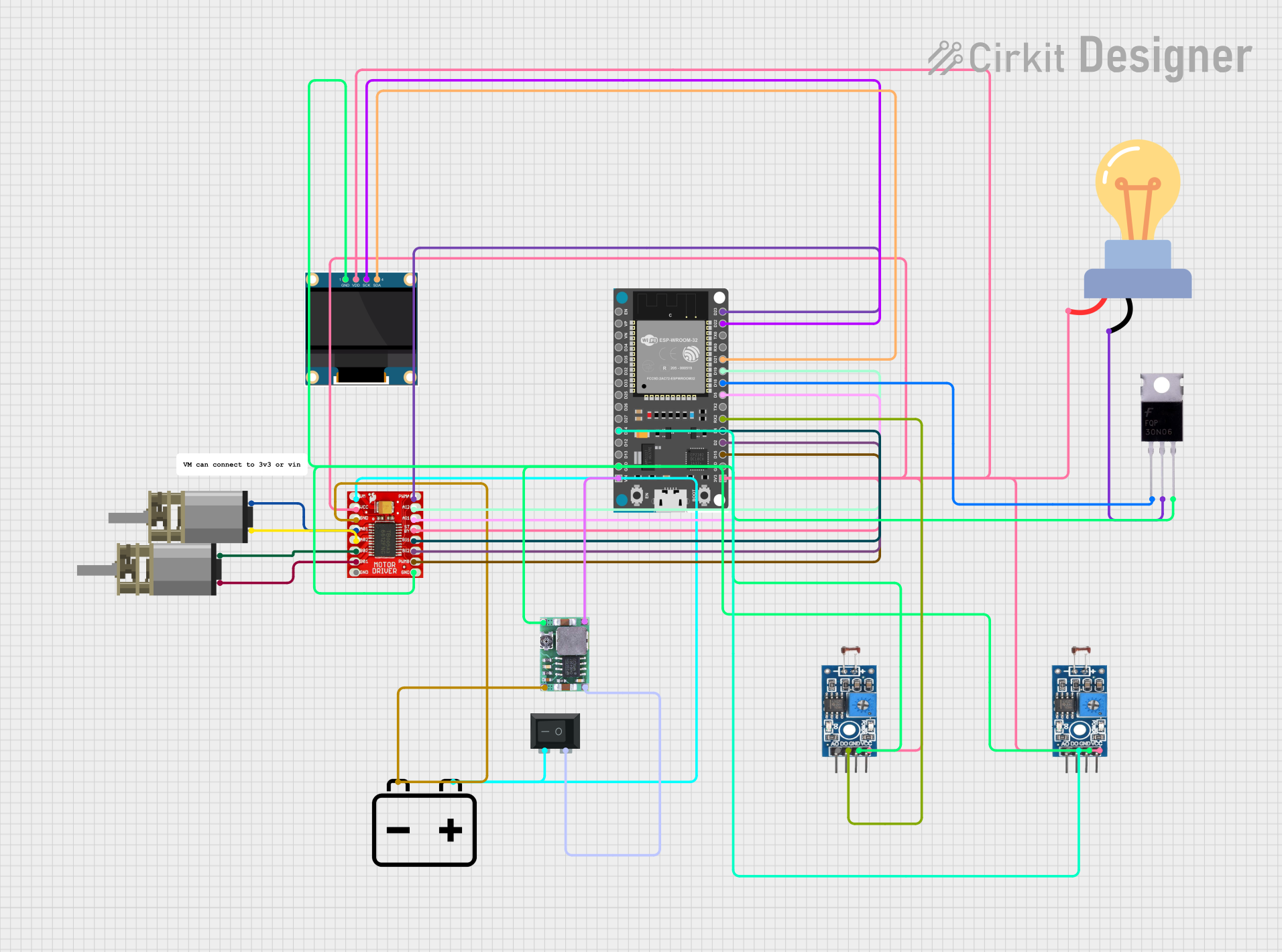
 Open Project in Cirkit Designer
Open Project in Cirkit Designer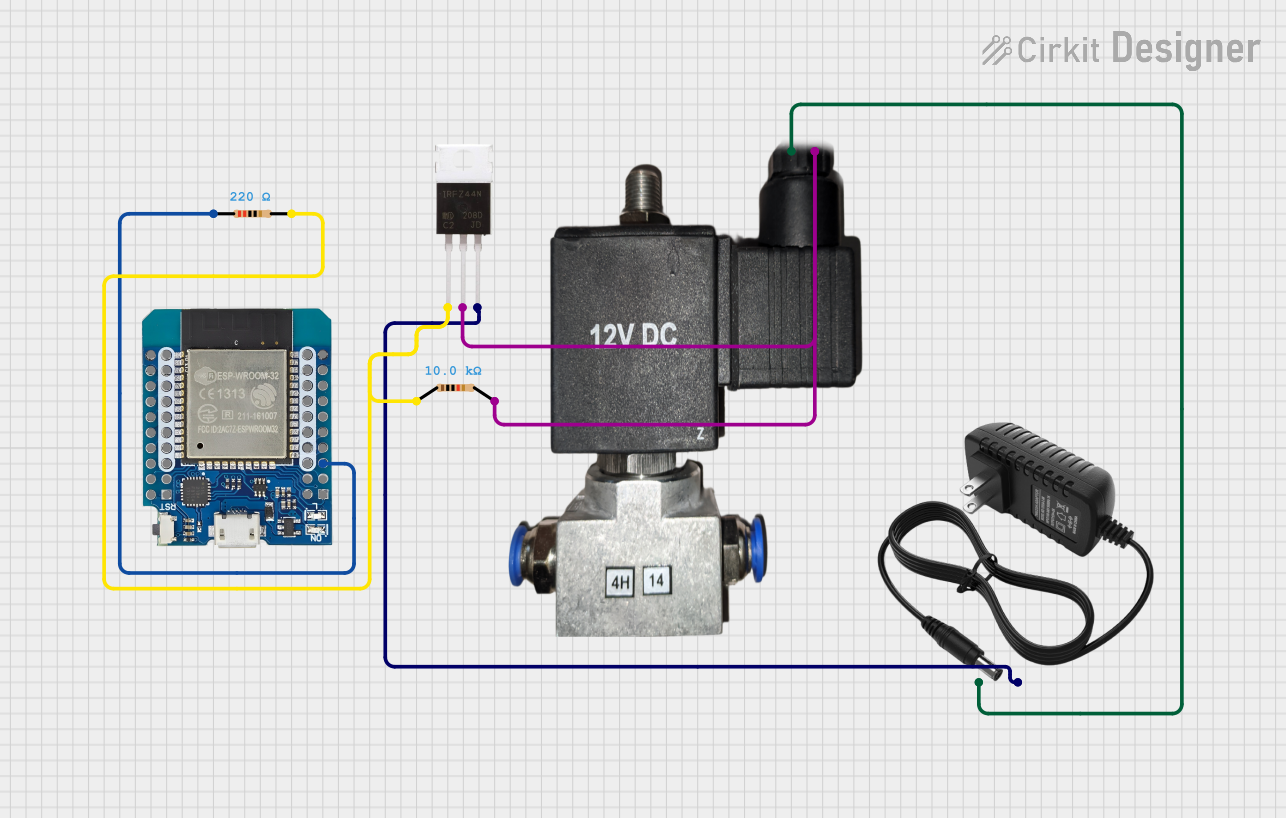
 Open Project in Cirkit Designer
Open Project in Cirkit DesignerExplore Projects Built with Placa MOSFET

 Open Project in Cirkit Designer
Open Project in Cirkit Designer
 Open Project in Cirkit Designer
Open Project in Cirkit Designer
 Open Project in Cirkit Designer
Open Project in Cirkit Designer
 Open Project in Cirkit Designer
Open Project in Cirkit DesignerCommon Applications and Use Cases
- Motor speed control in robotics and industrial systems
- LED dimming and lighting control
- DC-DC converters and power supply regulation
- Battery management systems
- High-power switching in automotive and renewable energy systems
Technical Specifications
Key Technical Details
| Parameter | Value |
|---|---|
| Manufacturer | O&M |
| Part ID | DG206N06 |
| MOSFET Type | N-Channel |
| Maximum Drain-Source Voltage (VDS) | 60V |
| Maximum Continuous Drain Current (ID) | 206A |
| Gate Threshold Voltage (VGS(th)) | 2V - 4V |
| Maximum Power Dissipation (PD) | 300W |
| RDS(on) (Resistance when ON) | 4.5 mΩ |
| Operating Temperature Range | -55°C to +175°C |
| Board Dimensions | 50mm x 30mm x 15mm |
Pin Configuration and Descriptions
The Placa MOSFET DG206N06 typically includes three main pins for the MOSFET and additional terminals for board connections. Below is the pinout:
| Pin Number | Pin Name | Description |
|---|---|---|
| 1 | Gate (G) | Controls the MOSFET switching (input signal). |
| 2 | Drain (D) | Connects to the load (output). |
| 3 | Source (S) | Connects to ground or the negative terminal. |
| 4 | VCC | Power supply for the board (optional, if applicable). |
| 5 | GND | Ground connection for the board. |
Usage Instructions
How to Use the Component in a Circuit
- Power Supply: Ensure the power supply voltage does not exceed the maximum drain-source voltage (60V).
- Gate Control: Use a microcontroller (e.g., Arduino UNO) or a signal generator to provide the gate signal. The gate voltage should be between 2V and 10V for optimal operation.
- Load Connection: Connect the load (e.g., motor, LED strip) between the drain pin and the positive terminal of the power supply.
- Source Connection: Connect the source pin to the ground or the negative terminal of the power supply.
- Gate Resistor: Use a resistor (e.g., 10Ω) between the gate and the microcontroller to limit current and prevent damage to the gate.
Important Considerations and Best Practices
- Heat Dissipation: The MOSFET can generate significant heat during operation. Use a heatsink or active cooling to prevent overheating.
- Gate Voltage: Ensure the gate voltage is within the specified range to avoid damaging the MOSFET.
- Flyback Diode: For inductive loads (e.g., motors), include a flyback diode across the load to protect the MOSFET from voltage spikes.
- Current Limiting: Ensure the load current does not exceed the maximum drain current (206A).
Example: Using the Placa MOSFET with Arduino UNO
Below is an example of controlling an LED strip using the Placa MOSFET DG206N06 and an Arduino UNO.
Circuit Diagram
- Gate (G): Connect to Arduino digital pin (e.g., D9) through a 10Ω resistor.
- Drain (D): Connect to the negative terminal of the LED strip.
- Source (S): Connect to ground.
- LED Strip Positive Terminal: Connect to the positive terminal of the power supply.
Arduino Code
// Define the MOSFET gate pin
const int mosfetGatePin = 9;
void setup() {
// Set the MOSFET gate pin as an output
pinMode(mosfetGatePin, OUTPUT);
}
void loop() {
// Turn the LED strip ON
digitalWrite(mosfetGatePin, HIGH);
delay(1000); // Keep it ON for 1 second
// Turn the LED strip OFF
digitalWrite(mosfetGatePin, LOW);
delay(1000); // Keep it OFF for 1 second
}
Troubleshooting and FAQs
Common Issues and Solutions
MOSFET Overheating
- Cause: Excessive current or insufficient cooling.
- Solution: Use a heatsink or active cooling. Ensure the load current is within the specified limit.
MOSFET Not Switching
- Cause: Insufficient gate voltage.
- Solution: Ensure the gate voltage is between 2V and 10V. Check the gate resistor value.
Voltage Spikes Damaging the MOSFET
- Cause: Inductive load without a flyback diode.
- Solution: Add a flyback diode across the load to suppress voltage spikes.
Load Not Turning ON
- Cause: Incorrect wiring or insufficient power supply.
- Solution: Verify all connections and ensure the power supply voltage is adequate for the load.
FAQs
Q1: Can I use the Placa MOSFET DG206N06 for AC loads?
A1: No, this MOSFET is designed for DC loads only. For AC loads, consider using a TRIAC or other AC-specific components.
Q2: What is the maximum PWM frequency for this MOSFET?
A2: The Placa MOSFET DG206N06 can handle PWM frequencies up to 100kHz, depending on the gate driver and load.
Q3: Do I need a gate driver for this MOSFET?
A3: For low-frequency applications, a microcontroller can directly drive the gate. For high-frequency or high-power applications, a dedicated gate driver is recommended.
Q4: Can I use this MOSFET with a 3.3V microcontroller?
A4: Yes, but ensure the gate threshold voltage (VGS(th)) is low enough for reliable switching. A logic-level MOSFET driver may be required for optimal performance.